Chōjū-jinbutsu-giga Item Number: N2.786 from the MOA: University of British Columbia
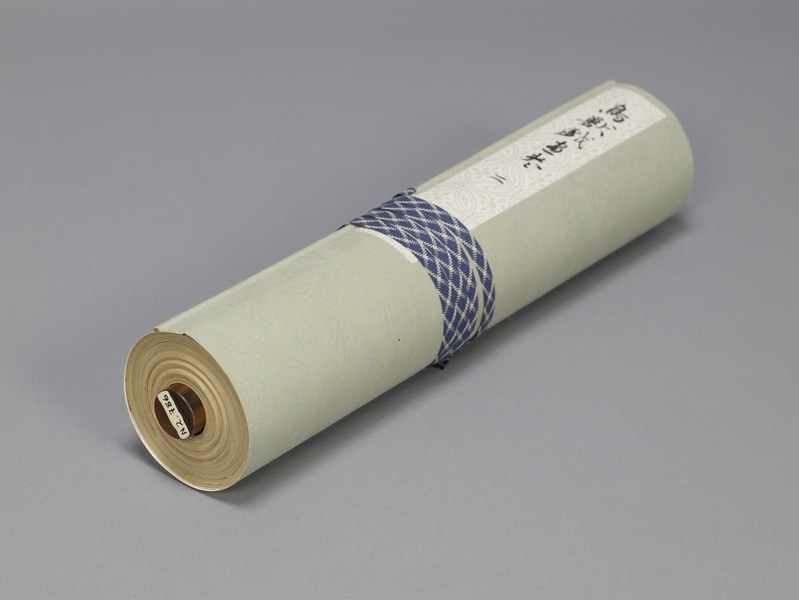
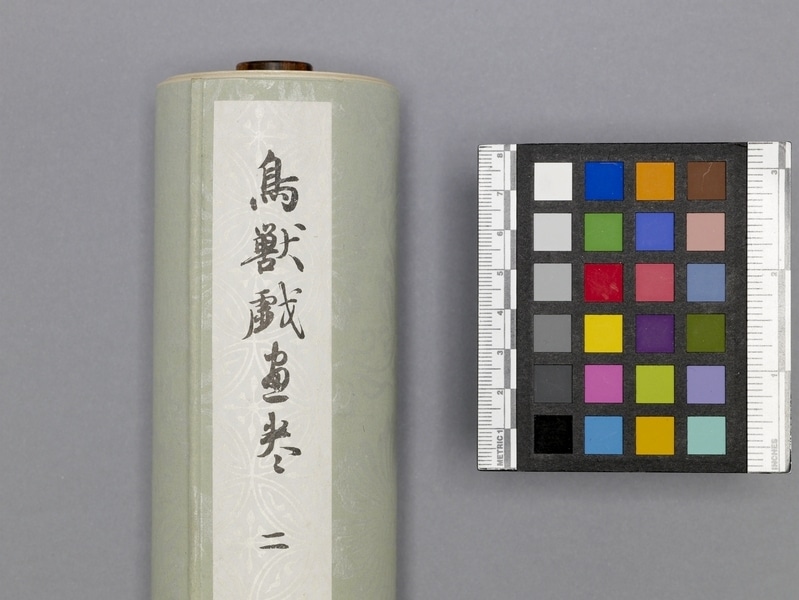
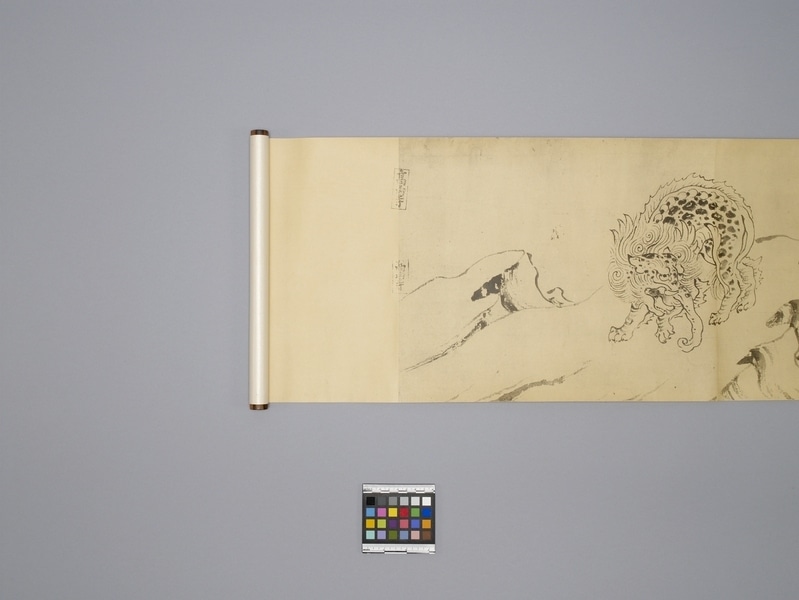
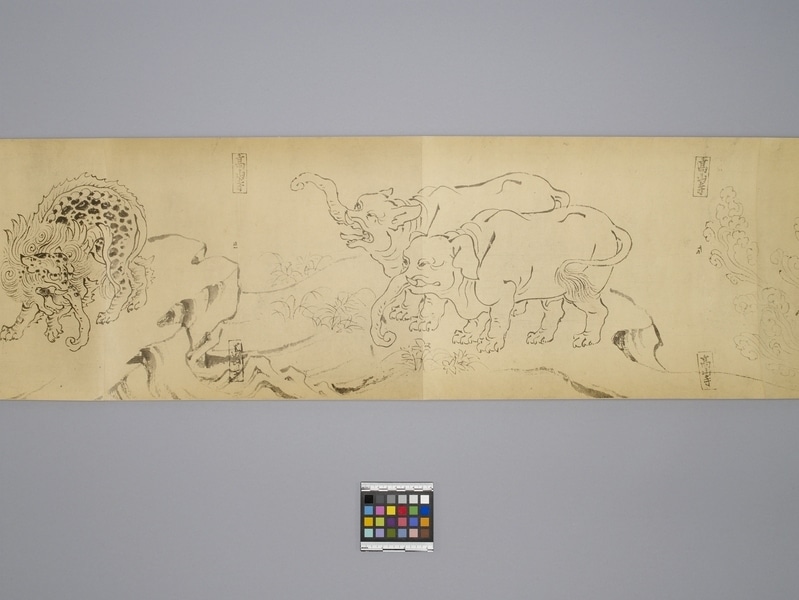
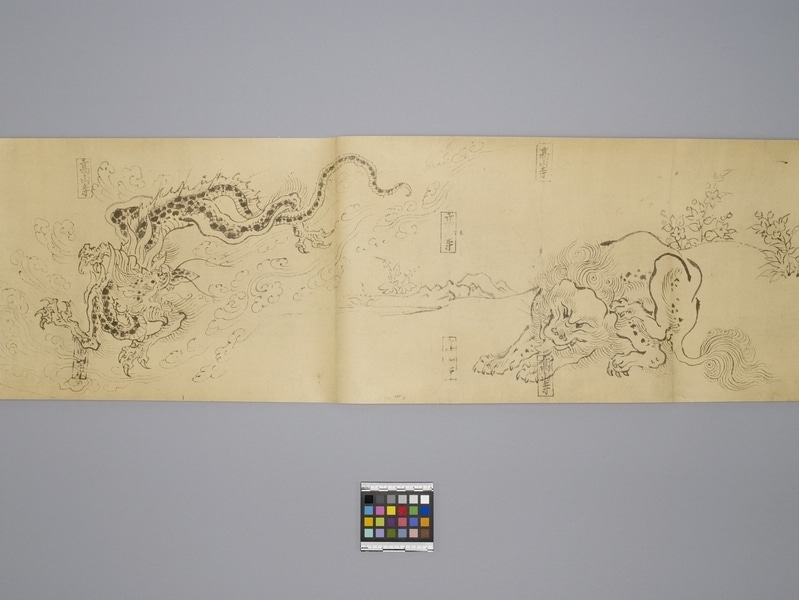
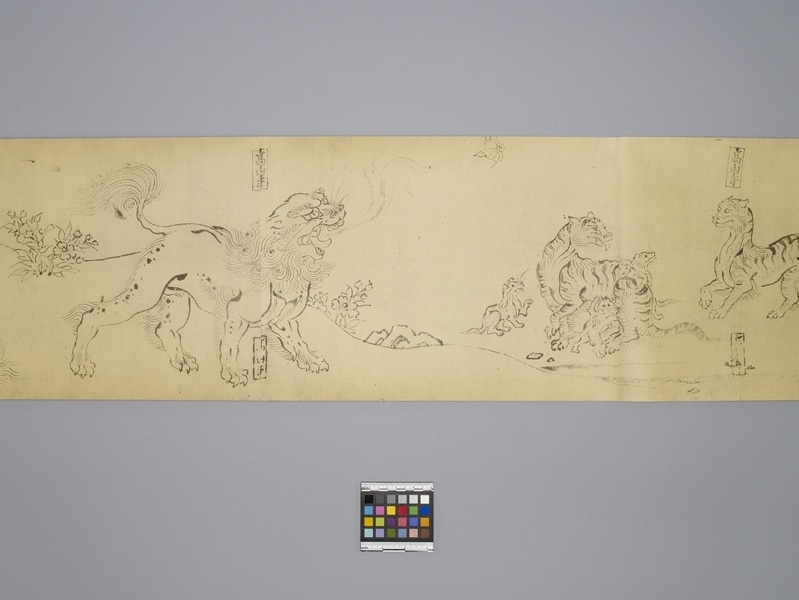
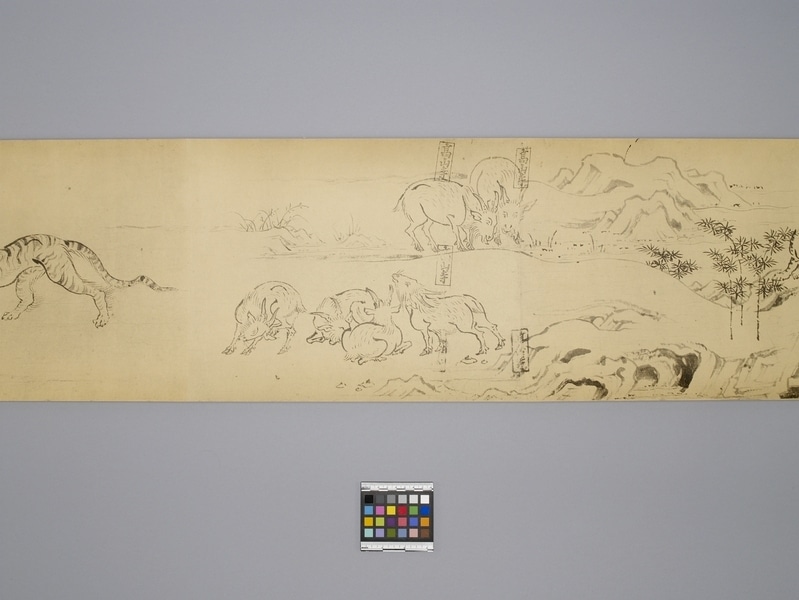
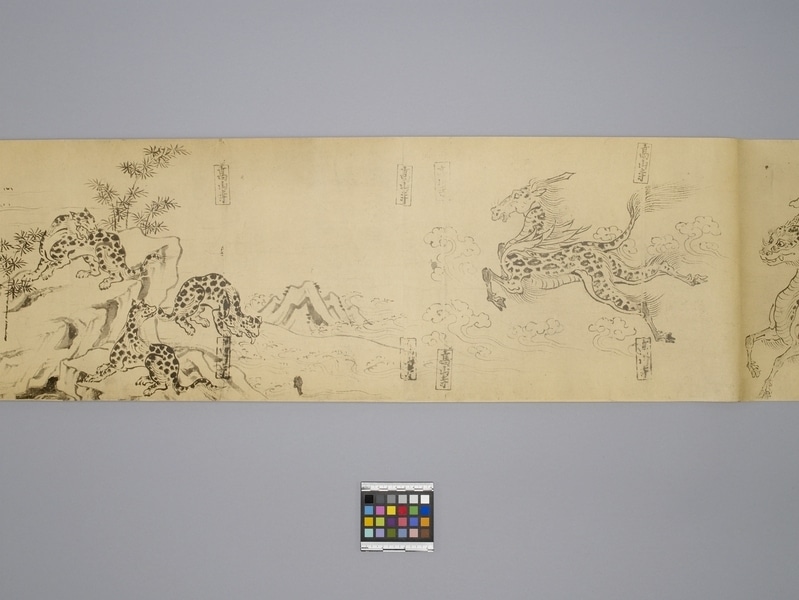
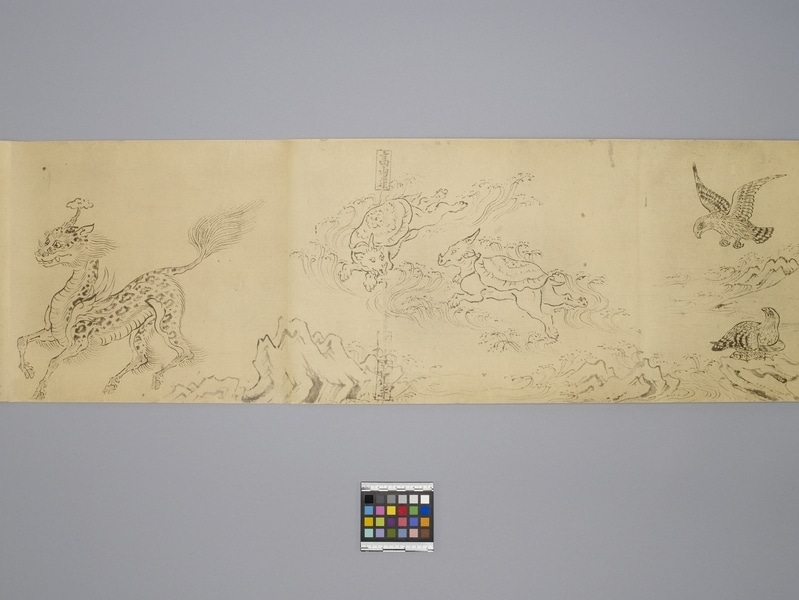
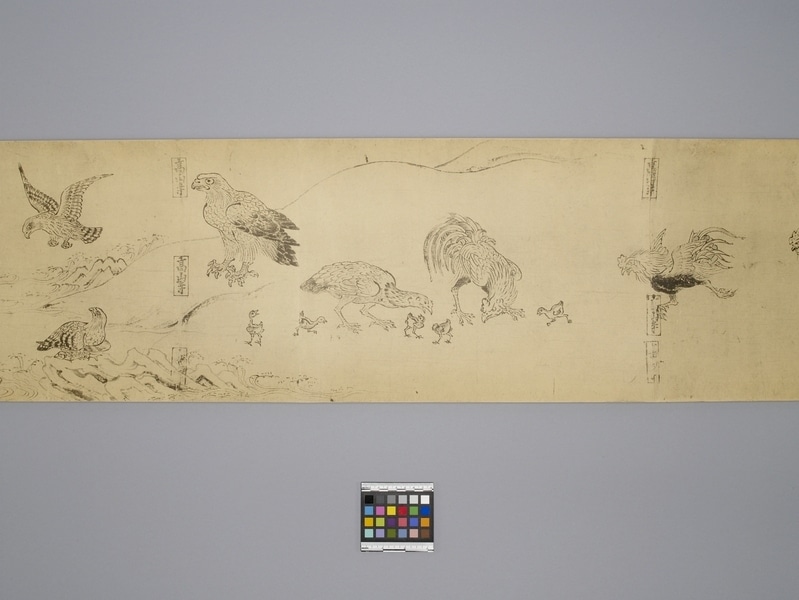

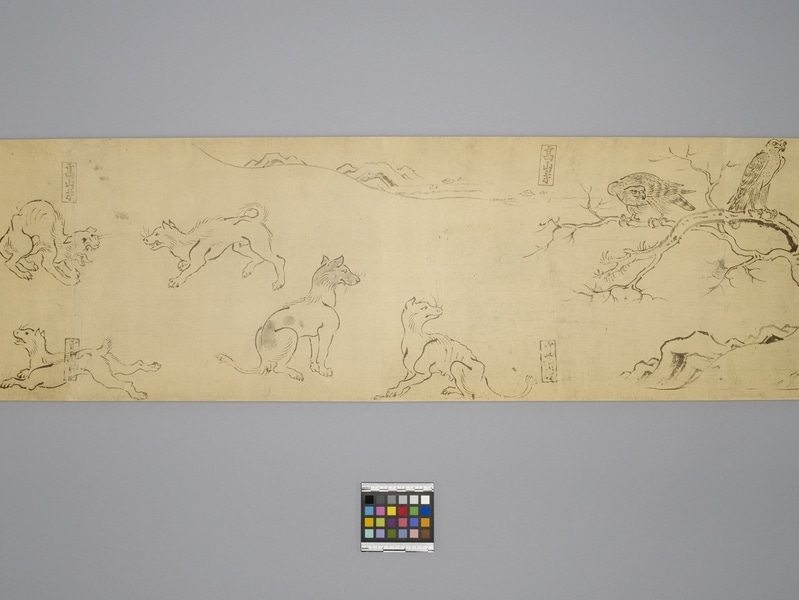
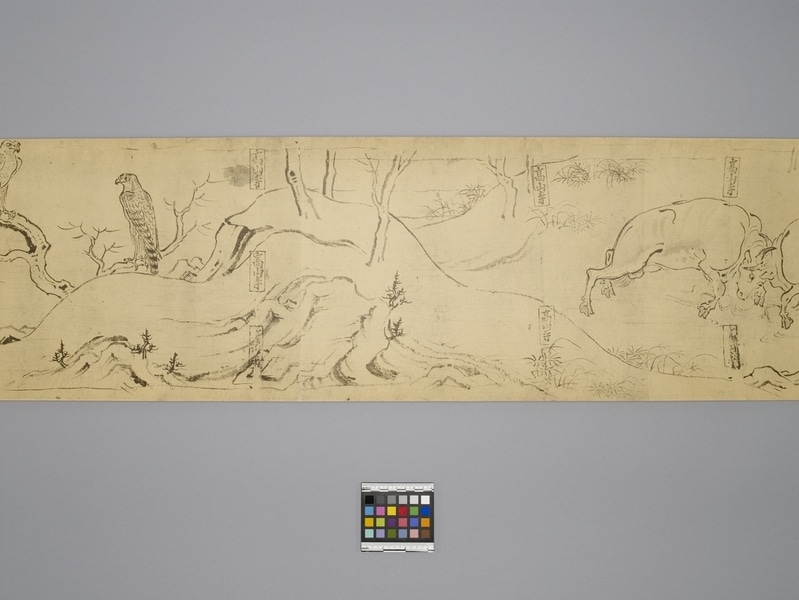
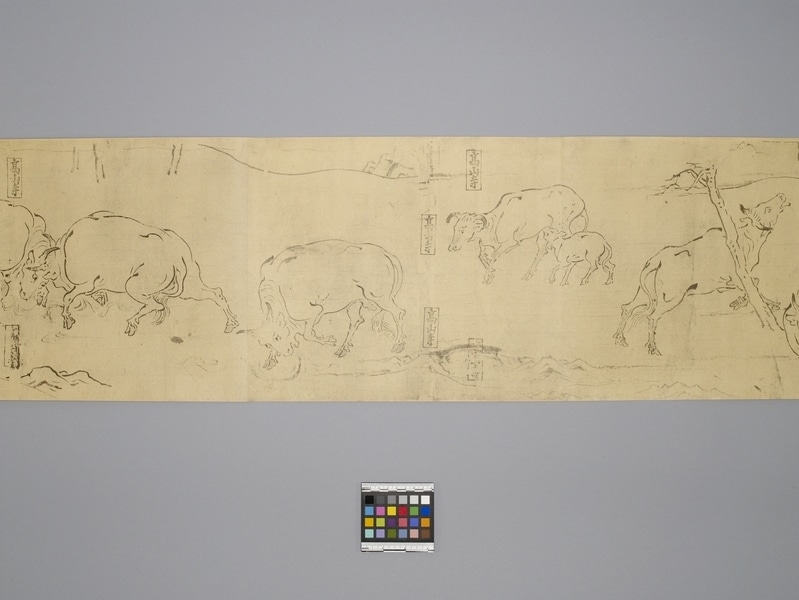
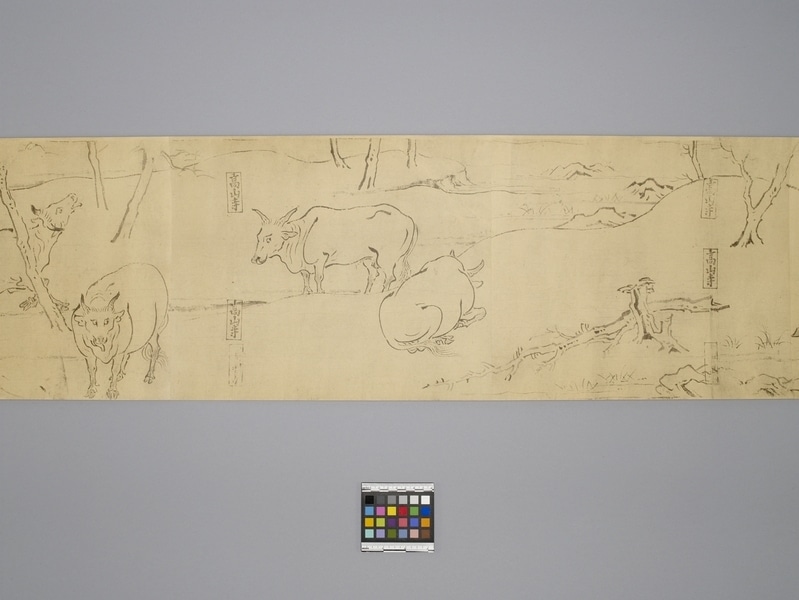
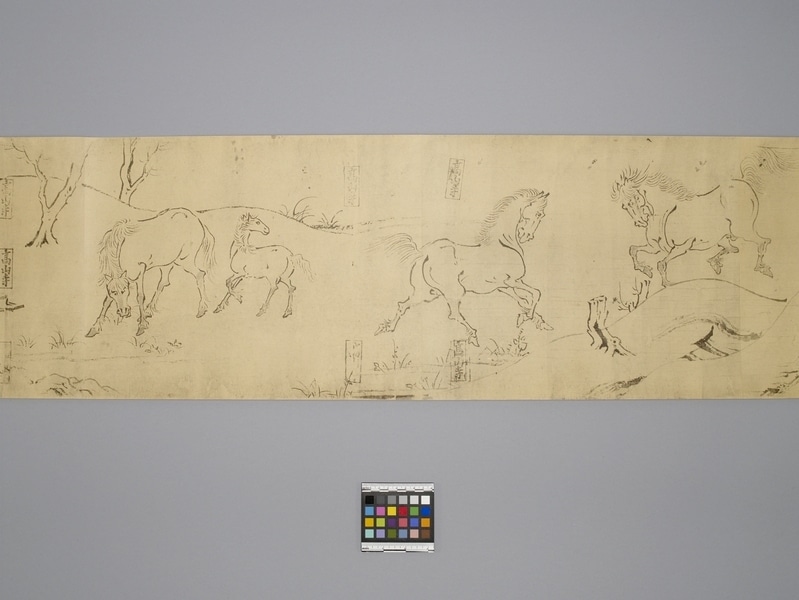
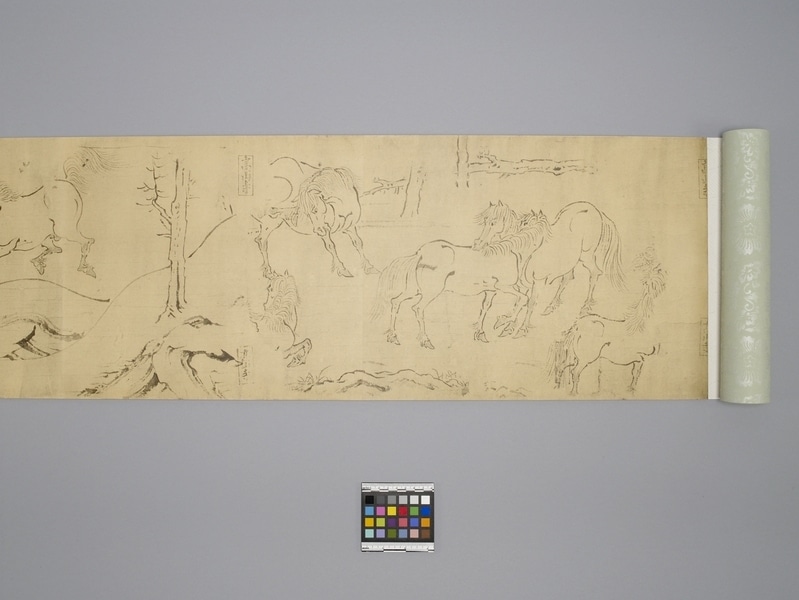
Description
Scrolls of Frolicking Animals and Humans. Second in a set of four (N2.785–N2.788) picture scrolls known as emakimono (絵巻物) or emaki (絵巻) of Chōjū-jinbutsu-giga (鳥獣人物戯画; Animal-person Caricatures). The scroll features ink brush stroke drawings of animals such as elephants, lions, birds, tigers, roosters, cows, horses, and other animals. The scroll is mounted on grey-green paper printed with a silver floral design; wound around a wooden baton. When wound closed, the scroll is tied shut with a length of blue cord printed with a white crisscross pattern.
Narrative
The purchase was recommended by Dr. Shūichi Kato (加藤周一; 1919 –2008), UBC Department of Asian Studies (1960-69). Dr. Kato was a well-known cultural, literary and political critic and intellectual, who originally trained as a medical doctor. The scrolls have a shortened title, Chōjū-giga kan (鳥獣戯画巻; Scrolls of Animal Caricatures), volume 1 of the work, officially known as Chōjū-jinbutsu-giga (鳥獣人物戯画; Caricatures of Animals and Humans). It is also known as Scrolls of Frolicking Animals and Humans in English. The scroll set in the MOA collection is a modern reproduction of the original work created between the 12-13th centuries, belonging to Kōzan-ji temple (高山寺) in Kyoto.
Cultural Context
The original work is a National Treasure of Japan. The right-to-left reading direction of the emakimono (絵巻物; picture scrolls) is still common in Japan. Some consider Chōjū-jinbutsu-giga (鳥獣人物戯画) to be the oldest work of manga, but it is a disputed claim.
Item History
- Made in Japan
- Collected during 1962
- Owned by Isseido before January 1962
- Received from Isseido (Seller) and Leon & Thea Koerner Foundation (Funding source) during January 1962
What
Who
- Culture
- Japanese
- Previous Owner
- Isseido
- Received from
- Isseido (Seller) and Leon & Thea Koerner Foundation (Funding source)
Where
- Holding Institution
- MOA: University of British Columbia
- Made in
- Japan
When
- Collection Date
- during 1962
- Ownership Date
- before January 1962
- Acquisition Date
- during January 1962
Other
- Item Classes
- works on paper
- Condition
- good
- Accession Number
- 0080/0005